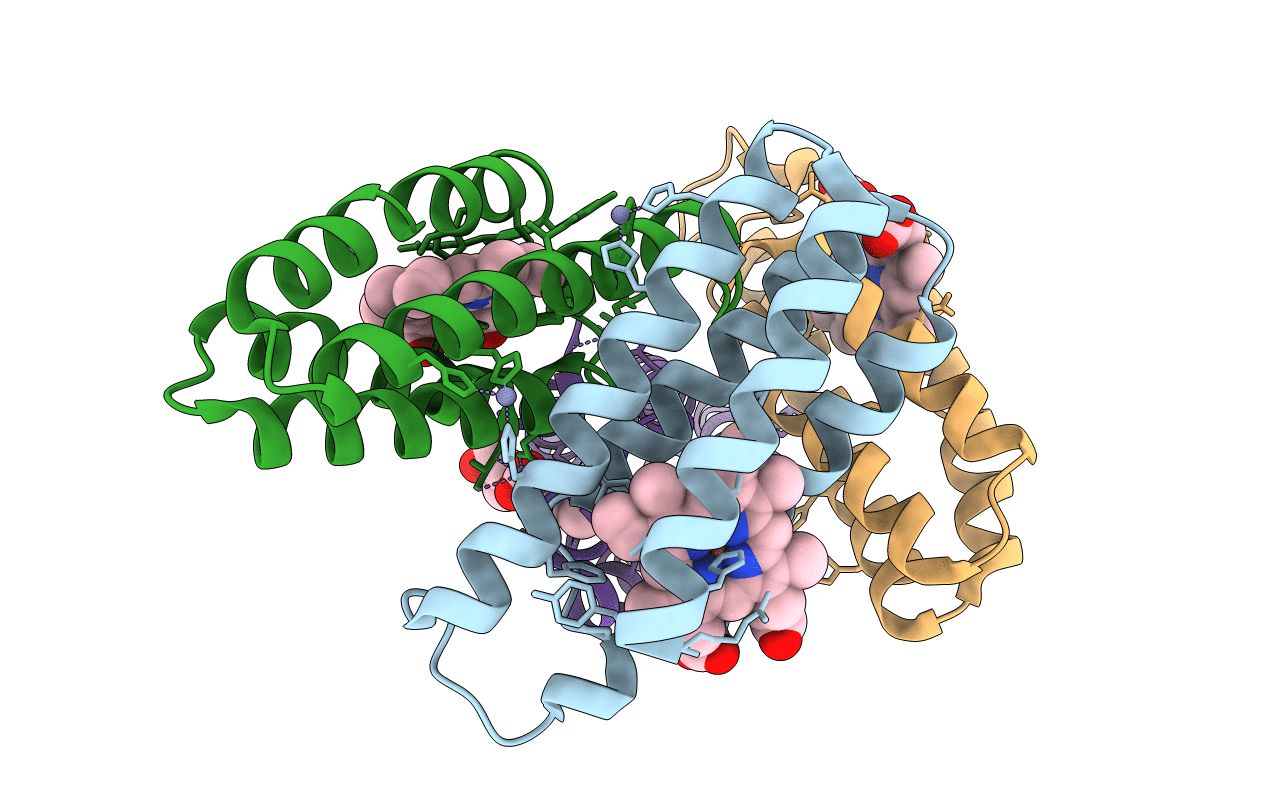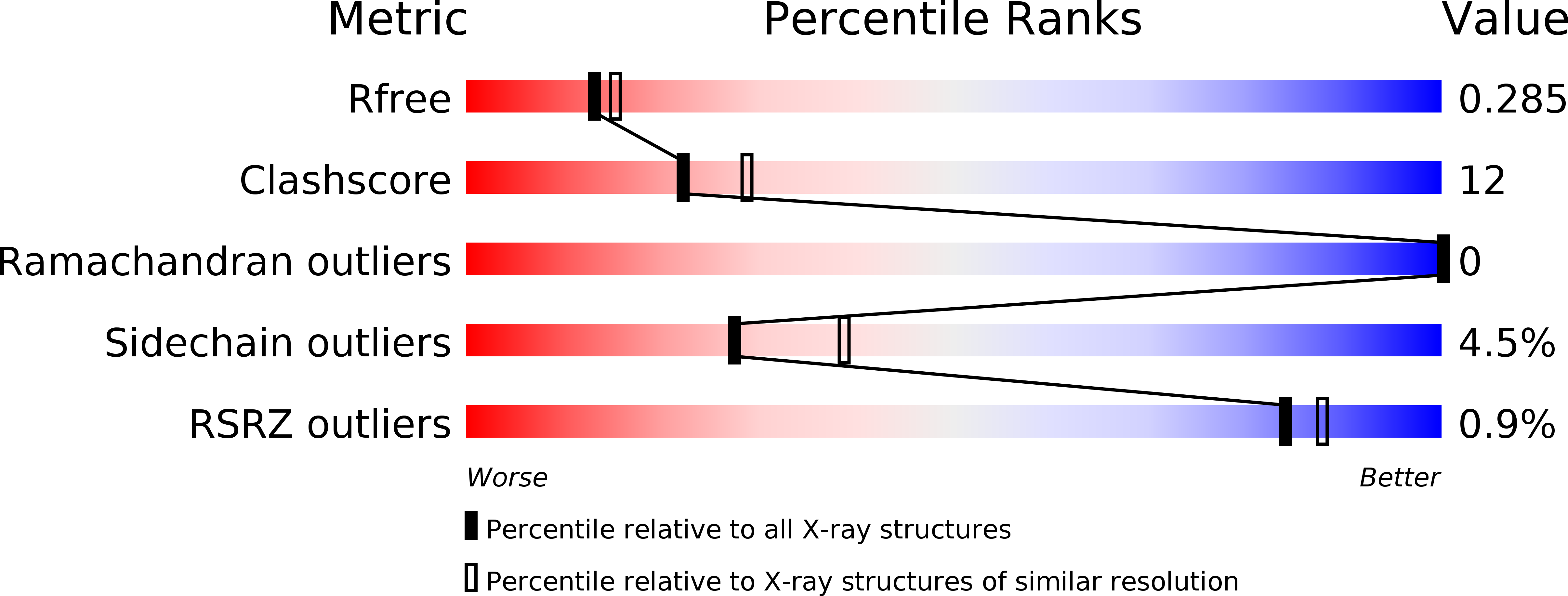
Deposition Date
2011-09-05
Release Date
2012-07-04
Last Version Date
2024-02-28
Entry Detail
PDB ID:
3TOM
Keywords:
Title:
Crystal structure of an engineered cytochrome cb562 that forms 2D, Zn-mediated sheets
Biological Source:
Source Organism:
Escherichia coli (Taxon ID: 562)
Host Organism:
Method Details:
Experimental Method:
Resolution:
2.30 Å
R-Value Free:
0.28
R-Value Work:
0.20
R-Value Observed:
0.21
Space Group:
C 1 2 1


